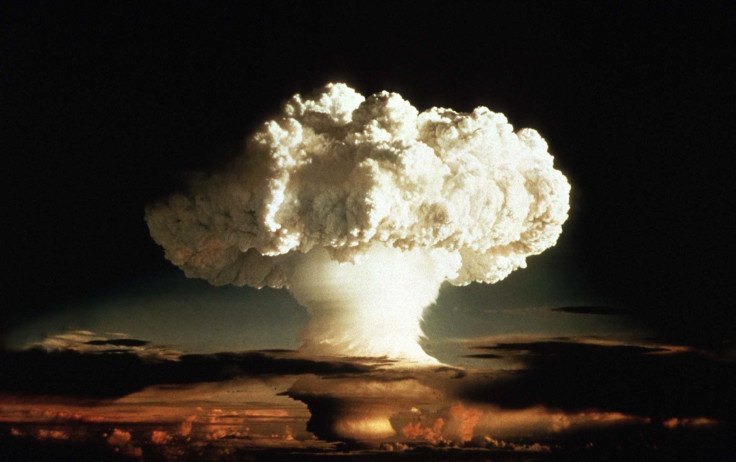
A new document details a near-catastrophe that occurred in the early 1960s over U.S. soil that could have caused more damage to the country than the nuclear bomb dropped on Hiroshima. The blast would have been 260 times as powerful as the first bomb on Japan, according to documents a new book the Guardian newspaper published Saturday. Eric Schlosser, the supervisor of the nuclear weapons safety department at Sandia National Laboratories in Albuquerque, said it only took one unsuspected switch to divert a catastrophe when two hydrogen bombs were accidentally released over Goldsboro, N.C. Jan. 24, 1961. The incident occurred when a B-52 bomber broke up in flight, releasing the weapons it had aboard.
One of the missles acted as though it was being fired. Its parachute deployed and trigger mechanisms engaged. When a B-52 disintigrates in air, it releases its bombs almost as if they were being dropped in a normal fashion. "The MK39 Mod 2 bomb did not possess adequate safety for the airborne-alert role in the B-52," Parker F. Jones at Sandia National Laboratories wrote in a document entitled "How I Learned To Mistrust The H-Bomb." He went on to say that the safety mechanisms were not complex enough to prevent accidental arming. According to the document, there were four safety switches, one of which is of no use in the air. The destruction of the bomber made two of them ineffective. "One simple, dynamo-technology, low-voltage switch stood between the United States and a major catastrophe!" Jones wrote.
Schlosser discovered the information through the Freedom of Information Act. The document detailing the near-devastating was penned in 1969. In his new book, "Command And Control," he writes of everything he discovered through FOIA documents. This includes 700 similar, significant accidents that involved around 1,250 nuclear weapons between 1950 and 1968.
© 2025 Latin Times. All rights reserved. Do not reproduce without permission.




